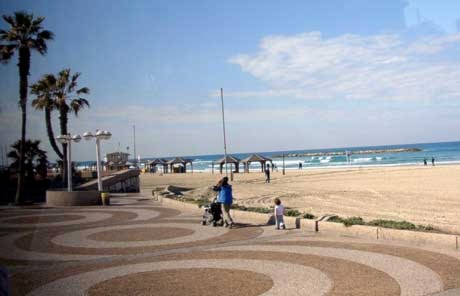TEL AVIV — It’s a Wednesday evening and the trendy Boya restaurant is bustling.
Located in this Mediterranean city’s upscale port area, Boya is the hot place to be and be seen where diners sit on terraces watching the sun set while eating tapas dishes laid out in neat rows along the seawall.
This is where the city’s inexhaustible nightlife begins and ends — usually in the wee hours of the morning.
It typifies what Tel Aviv is for both the young and the young at heart. Even though it celebrates its 100th birthday this spring, the city is still in its infancy in a country that often counts its years by the thousands.
“Israel is a country of contrasts, and those contrasts are magnified here,” explains Rivka Cohen Berman, our ever-patient guide, during our eight-day visit that starts in the country’s fun capital, Tel Aviv.
The name of the city itself describes the country’s complexities, she says.
In Hebrew, a “tel” is a mound of ancient ruins and “aviv” means spring, so really Tel Aviv means “Old New Land.” The name was meant to symbolize the rebirth of the Jewish people in the Middle East.
Even before Tel Aviv built its first road (some say it was Herzl Street, named for Zionist pioneer Theodore Herzl), there was its older sister Jaffa, located immediately to the south and connected to Tel Aviv by an amazing boardwalk along the Mediterranean Sea.
Jaffa is a small but ancient port that tradition says was built by Japhet, the son of Noah (of ark fame).
The oldest working port in the world, Jaffa is strategically located between Asia, Africa and Europe and over its history has been ruled by ancient Egyptians, Canaanites, Phoenicians, Greeks, Crusaders, Ottomans, British and finally the modern state of Israel.
Tel Aviv, on the other hand, is a contrast in modernism, including its architecture (the city is home to one of the world’s best collection of Bauhaus-style buildings), upscale shopping, fashionable restaurants and, of course, its booming nightlife.
Which brings me back to the Boya restaurant, where we sip wonderful Israeli wine and nosh on seafood and pasta and the most fabulous molten chocolate cake before heading out for a night on the town.
Although our group picks one of the quieter spots to sit outside, sipping a cocktail and watching the world go by, Tel Aviv has a couple of very famous night spots, including the legendary Whisky a Go Go, where Israel’s top celebrities like to dance the night away.
But be warned, the action usually doesn’t get started until after 1 a.m.
Israelis love food and in Tel Aviv they celebrate the art of dining. A multicultural city with immigrants from more than 100 countries, its food choices are truly eclectic and chefs take great pride in teasing taste buds with exotic culinary creations.
The city is not kosher — shellfish is widely available (although pork is still scarce) — and from Friday evening until Saturday evening, known as Shabbat or Sabbath, when most everything in Israel stops, the restaurants and clubs in Tel Aviv are still hopping.
After our late night, we’re up bright and early the next morning to head out for a tour of the city’s famous Bauhaus buildings, designed between 1924 and 1939, when a group of graduates from the Bauhaus School of Art and Design in Germany came to Tel Aviv. The buildings make up what is locally known as the “White City” — 4,000 buildings that boast some of the finest examples of Bauhaus architecture in the word.
Gale Beeby writes for the Toronto Star.
